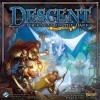Josh
gamer level 1
150 xp
150 xp
followers
1
1
Use my invite URL to register (this will give me kudos)
https://boardgaming.com/register/?invited_by=sjstein
profile badges
recent achievements

Subscribed to BG News
Subscribe to the weekly BoardGaming.com newsletter (from the home page).
Subscribe to the weekly BoardGaming.com newsletter (from the home page).

Gamer - Level 1
Earn Gamer XP to level up!
Earn Gamer XP to level up!

Rated My First Game
Rate a game you have played.
Rate a game you have played.

My First Favorite!
Add a game to your list of Favorites by clicking the "Favorite" button on a game page.
Add a game to your list of Favorites by clicking the "Favorite" button on a game page.

Add Games to Your Wish List! Navigate to a game page and click on the "Want It!" button

Hmmm ... nothing yet ... maybe Josh doesn't play games that much (or maybe Josh doesn't realize that BG Gold can be earned by playing games (hint hint).

Hmmm ... nothing yet ... maybe Josh doesn't really like games that much?

Not following any games yet
Player Stats
Critic (lvl 0)
70 xp
70 xp
Explorer (lvl 0)
30 xp
30 xp
Professor (lvl 0)
0 xp
0 xp
Reporter (lvl 0)
50 xp
50 xp
About Me
Power Grid, Manhattan Project, Lords of Waterdeep, Fiasco, Mouseguard, Warmachine






Dungeons & Dragons: Castle Ravenloft Board Game
Castle Ravenloft is a cooperative board game based on the 4th edition Dungeons and Dragons role-playing rules. It does a good job of a “dungeon crawl” without bogging down too much in the role-playing aspects of D&D which may turn off some players.
In other words, I would call it D&D Lite
Depending on your mood, your group and your time constraints, Ravenloft may or may not be what you are looking for. If you just want to dive into a dungeon, kill some monsters and grab some loot – then this game is likely a great fit. If however, you want to negotiate with the Necromancer before resorting to violence, or if you want to discover the reason people have been going missing in the town of Shallowood – then don’t bother with this game.
In Castle Ravenloft the players take on the role of a pre-generated character – either a Human Rogue, a Dwarven Cleric, an Eladrin Wizard, a Dragonborn Fighter or a Human Ranger. Each character has – of course – special abilities and actions available to them, along with a set of power cards specific to their race and class.
The game presents the players with a scenario (there are over 10 in the game as it stands – with others available on the ‘net) detailing a “mission” presented along with some special rules. You step into the depth of Castle Ravenloft and the mayhem begins.
Each player in-turn can move and attack, then has to either expose new areas of the dungeon or have a random encounter. The game encourages you to continue moving forward at a somewhat rapid pace – hence revealing new dungeon tiles and more monsters to fight. The monsters move via a set of “tactics” which determine their actions – and allow the players to cooperatively best them. Although the monsters do move on specific player’s turns, their actions are determined by the game.
Overall I think Castle Ravenloft does a good job fulfilling the dungeon crawl niche of games. Although the D&D license may at first seem like a hook to get players to try the game, Castle Ravenloft does introduce key D&D concepts like player actions, abilities, ranged vs. melee combat, etc. It is certainly a good fit for players unfamiliar with RPGs in general or D&D specifically.
The component quality is top notch – with tons of plastic miniatures, many dungeon tiles and a lot of cardboard counters to keep track of many different things. My only negative component-wise is the box insert is a little useless for keeping things sorted – some “snack-sized” baggies will do wonders for clean-up and organization.
Finally, being cooperative is a nice change of pace compared to a game like Descent where the players are working against a game-master. The game scales well based on the number of players, and it is easy to handicap for new or younger adventurers.